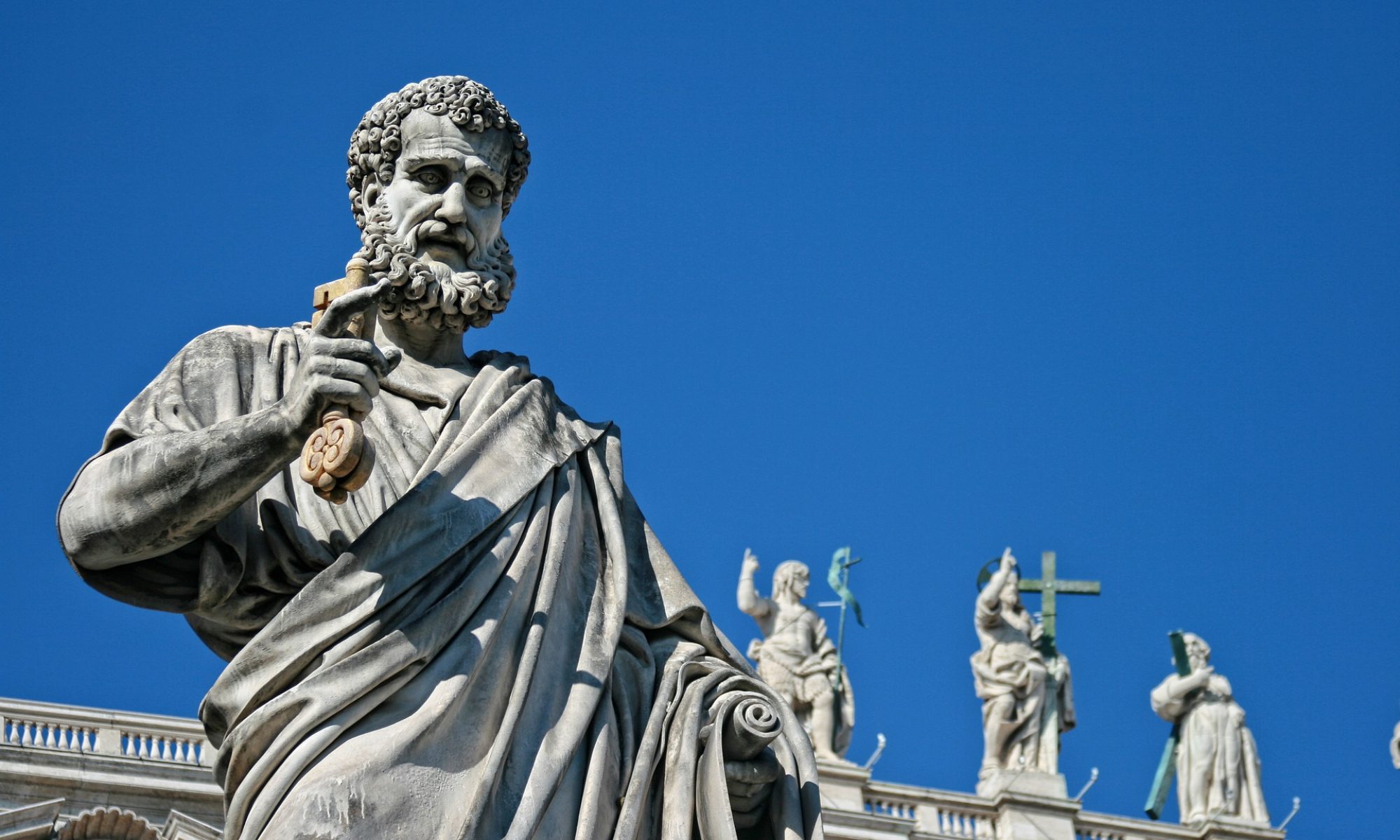Una exposición del Vaticano sobre la Historia de la Biblia, con algunos puntos ocultos
01 DE ABRIL DE 2012
Las personas que visiten la Plaza de San Pedro antes del 15 de Abril se encontrarán con una atracción interesante e inesperada. En el Braccio di Carlo Magno (o sea, el ala de Carlomagno) al lado de la basílica de San Pedro, bajo la columnata de Bernini en la parte derecha de la plaza, una exhibición titulada Verbum Domini (la Palabra del Señor) llamará su atención. El coloreado folleto italo-inglés que pondrán en sus manos les invita a “Dar un paseo por la historia de la Biblia en esta colección privada de textos bíblicos poco frecuentes y objetos de enorme importancia”. La entrada es gratuita.
Verbum Domini es también el título de la Exhortación Apostólica Post-Sinodal publicada en 2010 por Benedicto XVI, en la cual el Papa resumía la interpretación actual católico romana de la Palabra de Dios, es decir, una Tradición viva que incluye la Biblia y que el Magisterio de la Iglesia interpreta fielmente. La conexión entre el texto papal y este certamen es clara e indica el intento de subrayar la importancia de este tema.
1. UNA EXPOSICIÓN FASCINANTE…
Esta muestra se armó a partir de colecciones privadas procedentes de todo el mundo, principalmente de la “Green Collection”, la colección privada más grande del mundo de textos bíblicos y documentos raros.
Desplegada en 8 galerías, 152 textos y artefactos bíblicos excepcionales muestran la historia de la Biblia: desde antiguos rollos a textos copiados y volúmenes impresos del siglo XVII; desde el hebreo al griego, al latín y a otras lenguas vernáculas; desde Qumran a Europa y al resto del mundo.
A continuación están detallados algunos de los elementos más relevantes de la exposición:
1 Codex Climaci Rescriptus, una de las primeras Biblias casi completas, que sobreviven y que contiene los más extensos textos bíblicos tempranos en la lengua familiar de Jesús, o sea, el arameo palestino.
2 Rollos.
3 La Jeselsohn Stone también conocida como “la revelación de Gabriel”, es una tabla de arenisca de tres pies de altura y 150 libras de peso, descubierta cerca del Mar Muerto en el Jordán y que contiene 87 líneas de un texto hebreo de finales del siglo I aC.
4 La BibliaGutenbergLibro de Romanos, el primer libro impreso en Occidente con tipografía móvil.
5 La Biblia Políglota Complutense, la primera edición multilingüe de toda la Biblia.
En la primera galería, hay también dos rollos medio quemados de la Tora que escaparon de la total destrucción intentada por los nazis y estalinistas. Son un testimonio conmovedor de la continua batalla que rodea a la Biblia.
2. PROPÓSITOS INTERRELIGIOSOS Y ECUMÉNICOS
La exposición tiene un objetivo ambicioso. En palabras de los organizadores, “la Palabra de Dios, concretamente, es una manera de celebrar el amor interreligioso que muchas tradiciones sienten por la Biblia y, creemos que es una forma de compartirlo con el mundo”.
Las tradiciones judías, ortodoxas orientales, católicas y protestantes están todas representadas en ella. Por parte del Vaticano, esto es lo que dijo en la inauguración el Cardenal Farina, Prefecto de la Biblioteca Vaticana, acerca de la exhibición: “El título Verbum Domini se eligió para destacar la concepción ecuménica de esta exposición, y también su sede aquí en el Vaticano. El origen de los documentos, el predominio de la “Green Collection”, y los que proceden de otras colecciones ponen de relieve la participación de las denominaciones cristianas. Ya que en la realidad, la Biblia une, aunque demasiadas personas opinen lo contrario, el hecho es que es un punto fuerte de unión”.
Justo lo suficiente. Pero, ¿por qué en el catálogo que se distribuye a la entrada se lee que “esta muestra celebra la dramática historia de la contribución católica al libro más prohibido, más combatido y más vendido de todos los tiempos”? La extensa y general contribución a la historia de la Biblia, ¿se ha convertido en una contribución católica solamente? Quizás sea un error cometido por un editor celoso, pero refleja la cultura provinciana en la que cada institución (incluida la Vaticana) puede quedar atrapada .
3. LA HISTORIA QUE FALTA
No obstante, el punto más desconcertante es lo que la exhibición no dice acerca de la historia de la Biblia. Lo que no se dice es tan evidente como lo que se dice .
Toda la trayectoria del sugerente relato es “lineal” hasta el punto de ser históricamente insostenible. El retrato que se ofrece es que las traducciones “modernas” de la Biblia en lenguas vernáculas se expandieron a través del espectro cristiano y que cada sector de la iglesia cristiana promovió su difusión .
La realidad es muy diferente. Desde el siglo XII la Iglesia Romana ha prohibido, de diferentes maneras, la circulación de Biblias en la lengua del pueblo .
Estas prohibiciones llevaron a la compilación en 1559, por el Papa Pablo IV, del Index of Librorum Prohibitorum (Indice de Libros Prohibidos) donde las traducciones de la Biblia estaban entre los libros vedados. El vehemente ataque efectuado por la Iglesia Tridentina a las traducciones de la Biblia permitió al historiador Gigliola Fragnito hablar de “la Biblia en la hoguera” para describir lo sucedido hasta el siglo XVII en los países dominados por la Iglesia Católica [1] . Aquella prohibición duró varios siglos.
La verdadera historia, por consiguiente, no es el relato suave, pacífico y ecuménico que narra la exposición Verbum Domini.
La Biblia es un patrimonio compartido por todos los cristianos y esta verdad está fuera de discusión. Por consiguiente, las exhibiciones históricas de la Biblia deben aspirar a contar la historia de una manera justa y precisa más que a perseguir, con vanas ilusiones, lecturas ecuménicas que son parciales, selectivas y, por tanto, inducen a error.
Traducción: Rosa Gubianas

